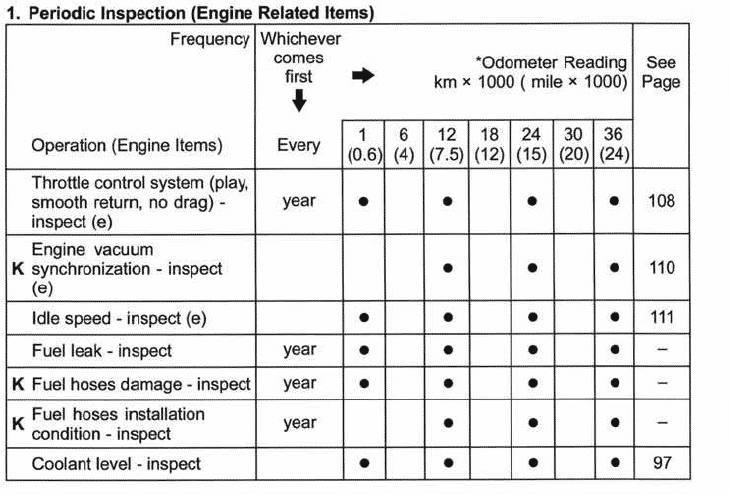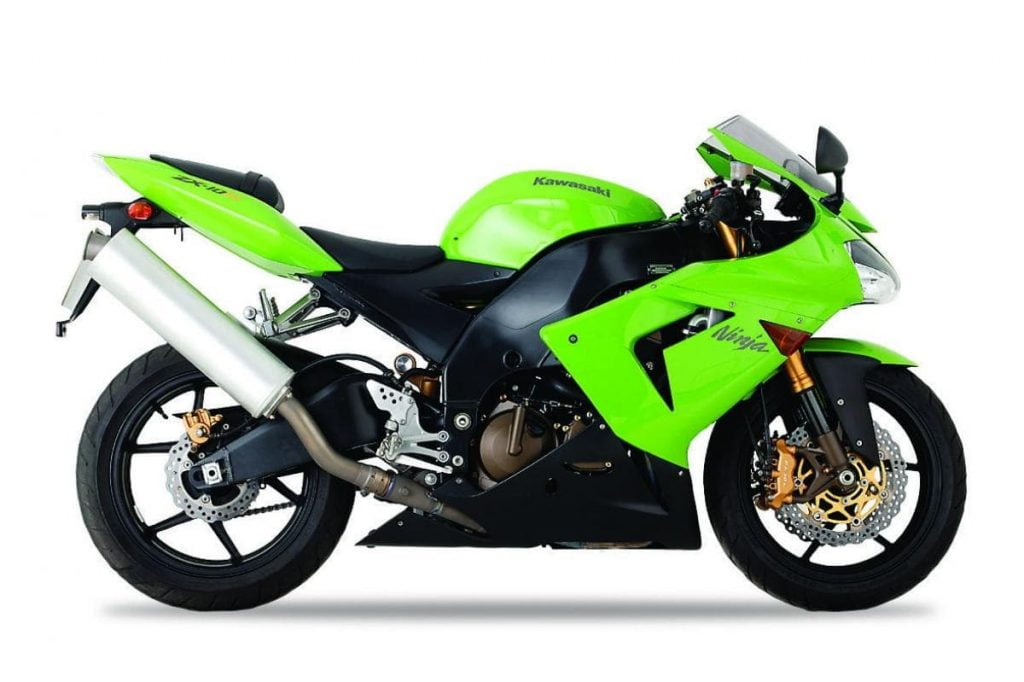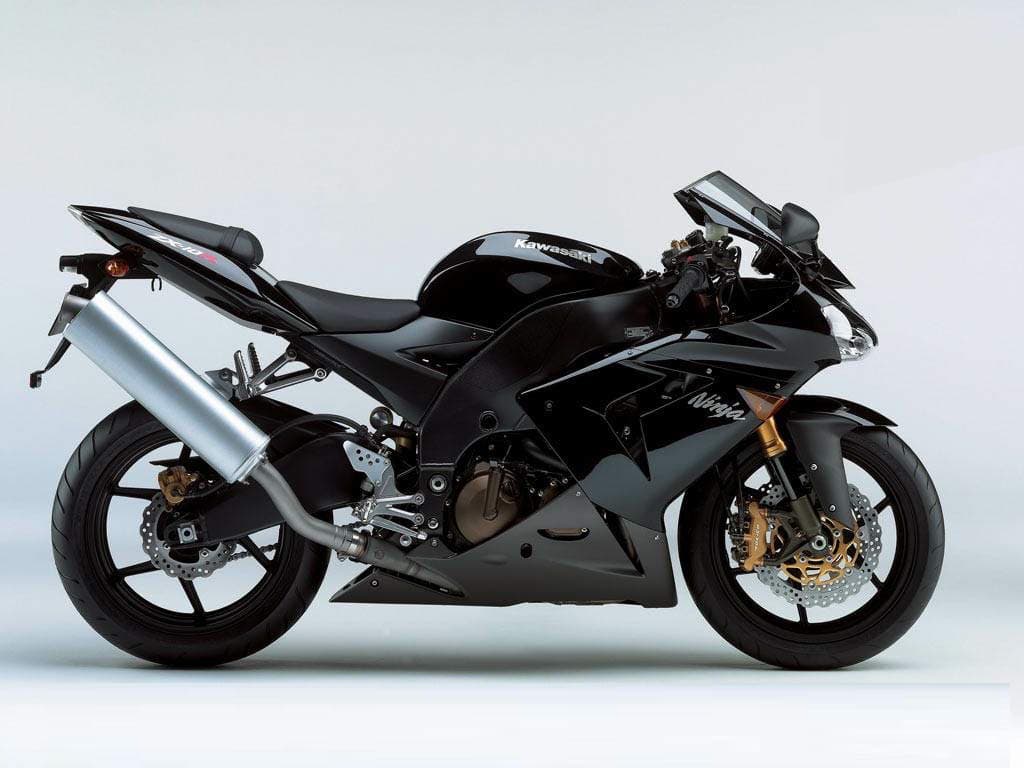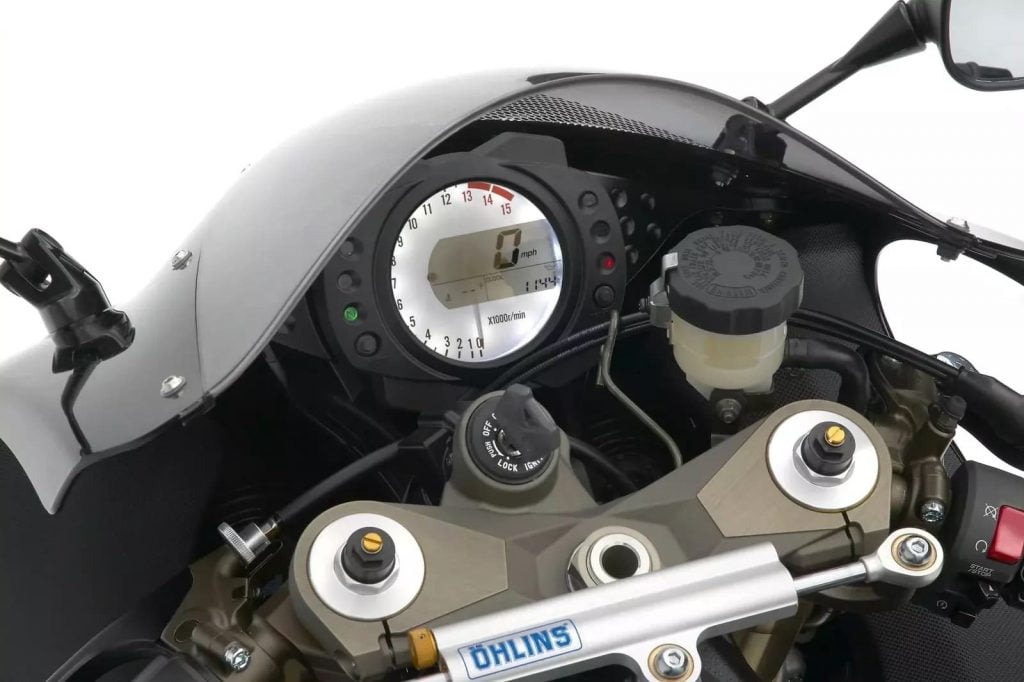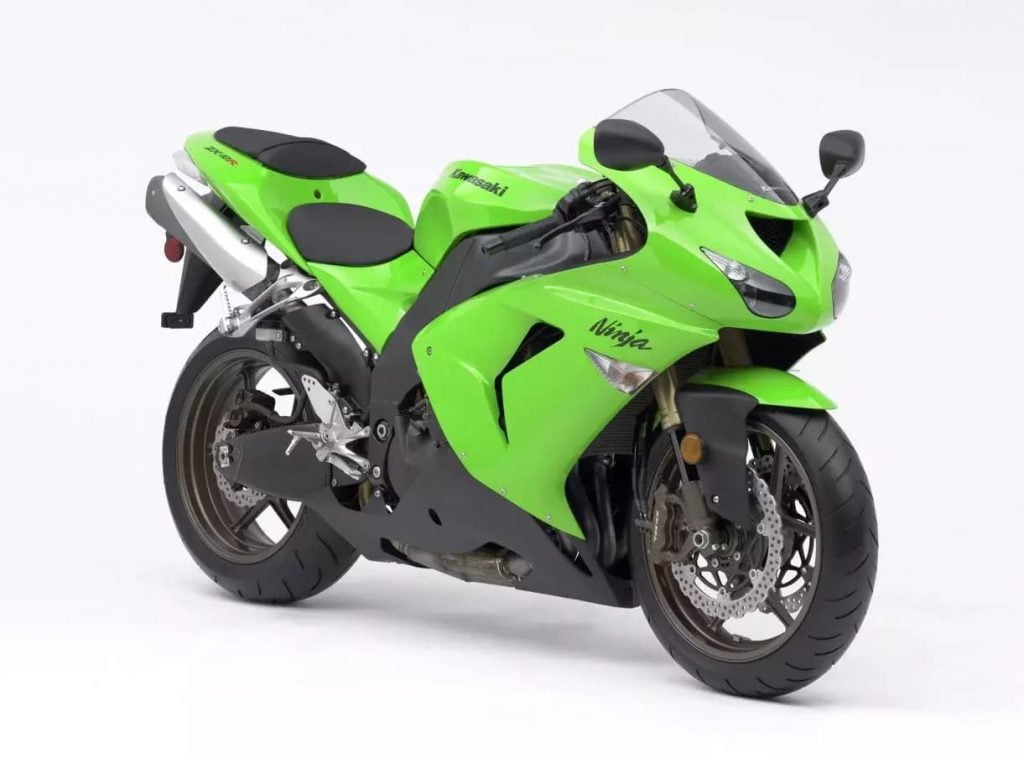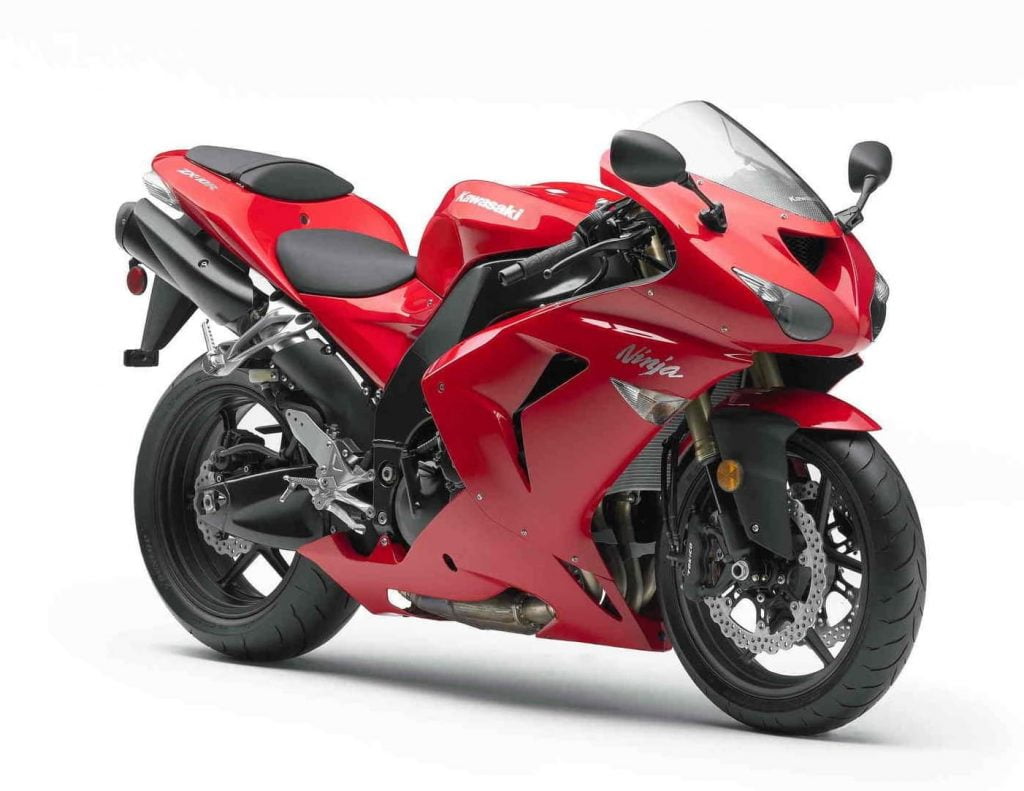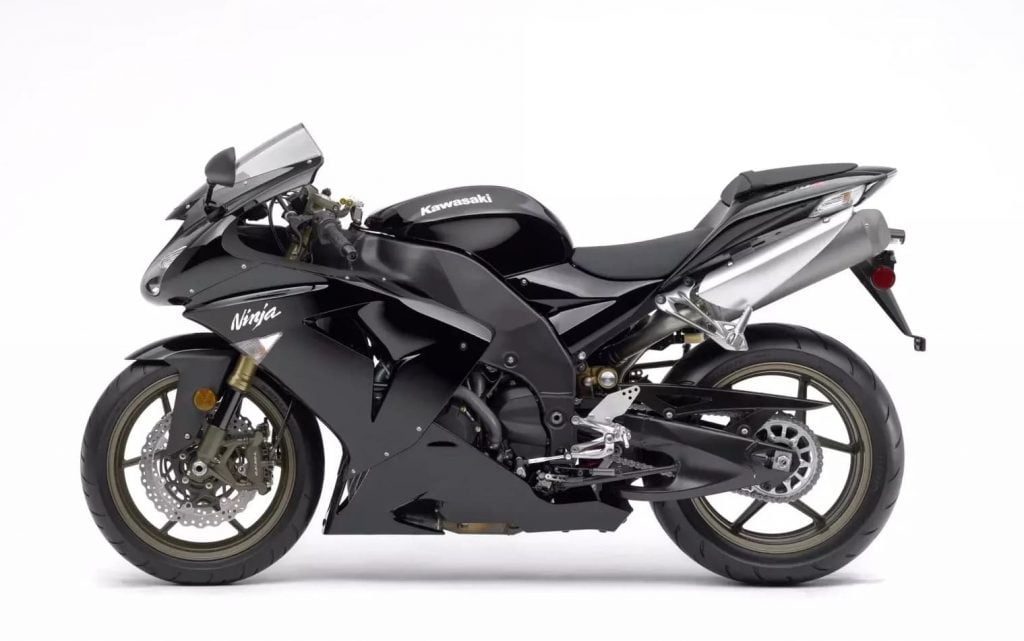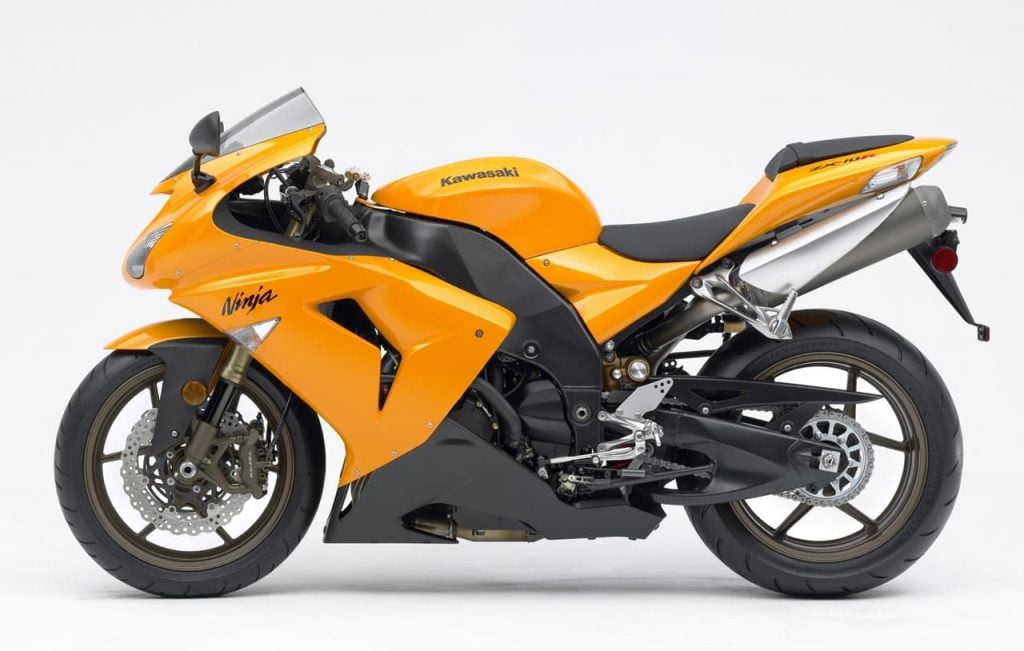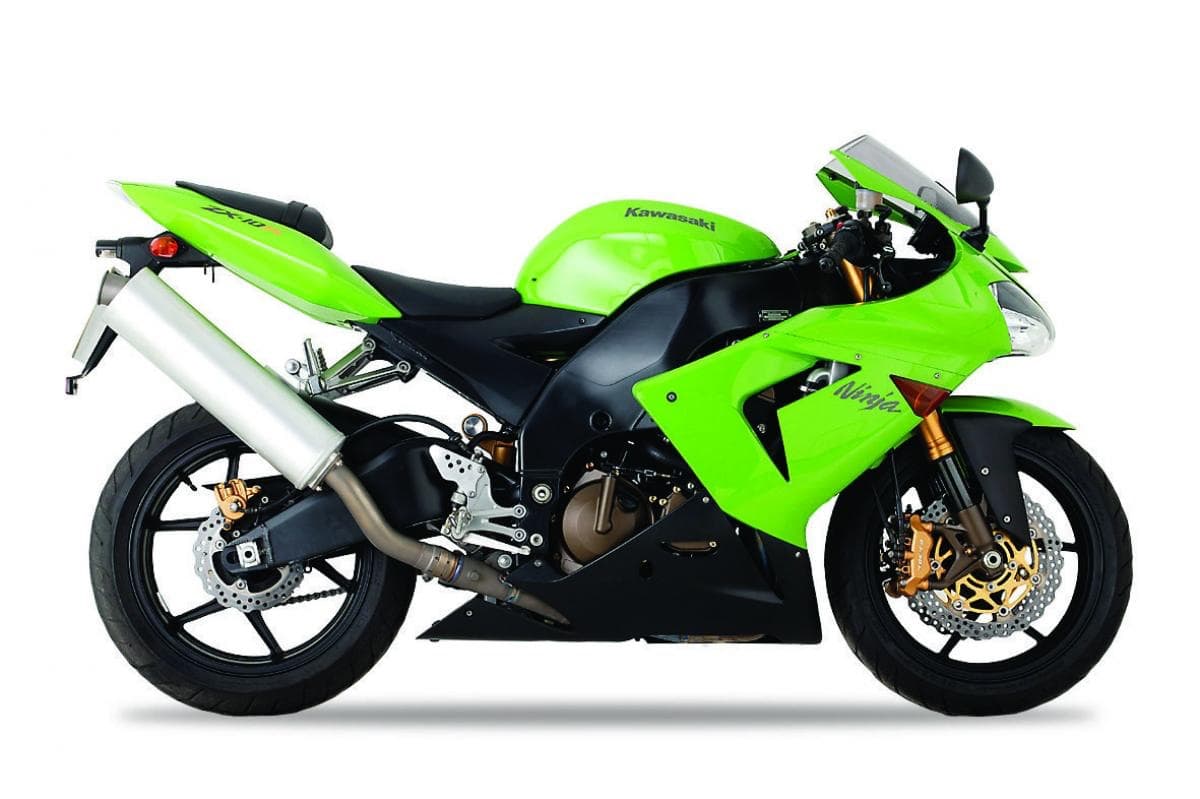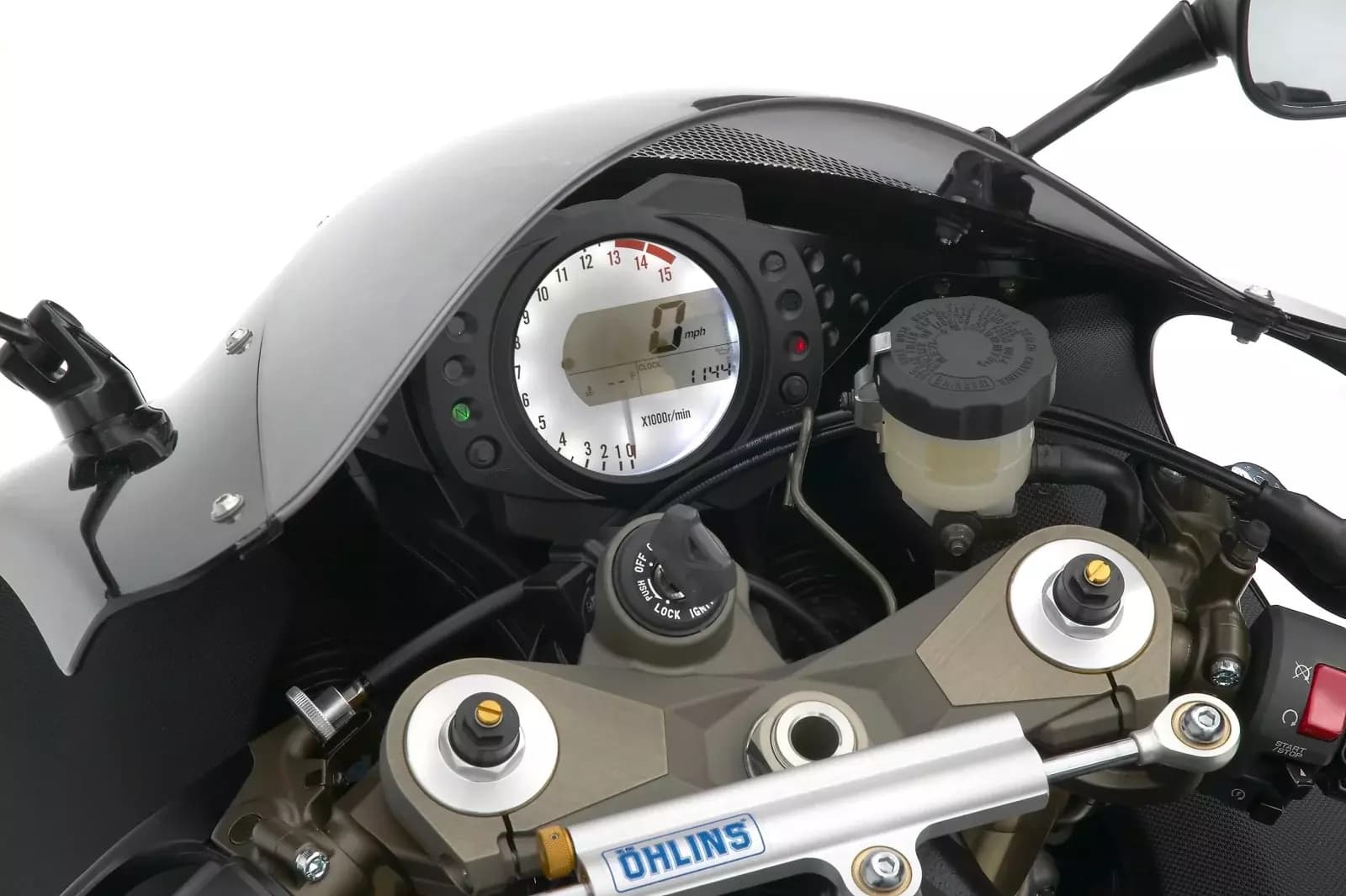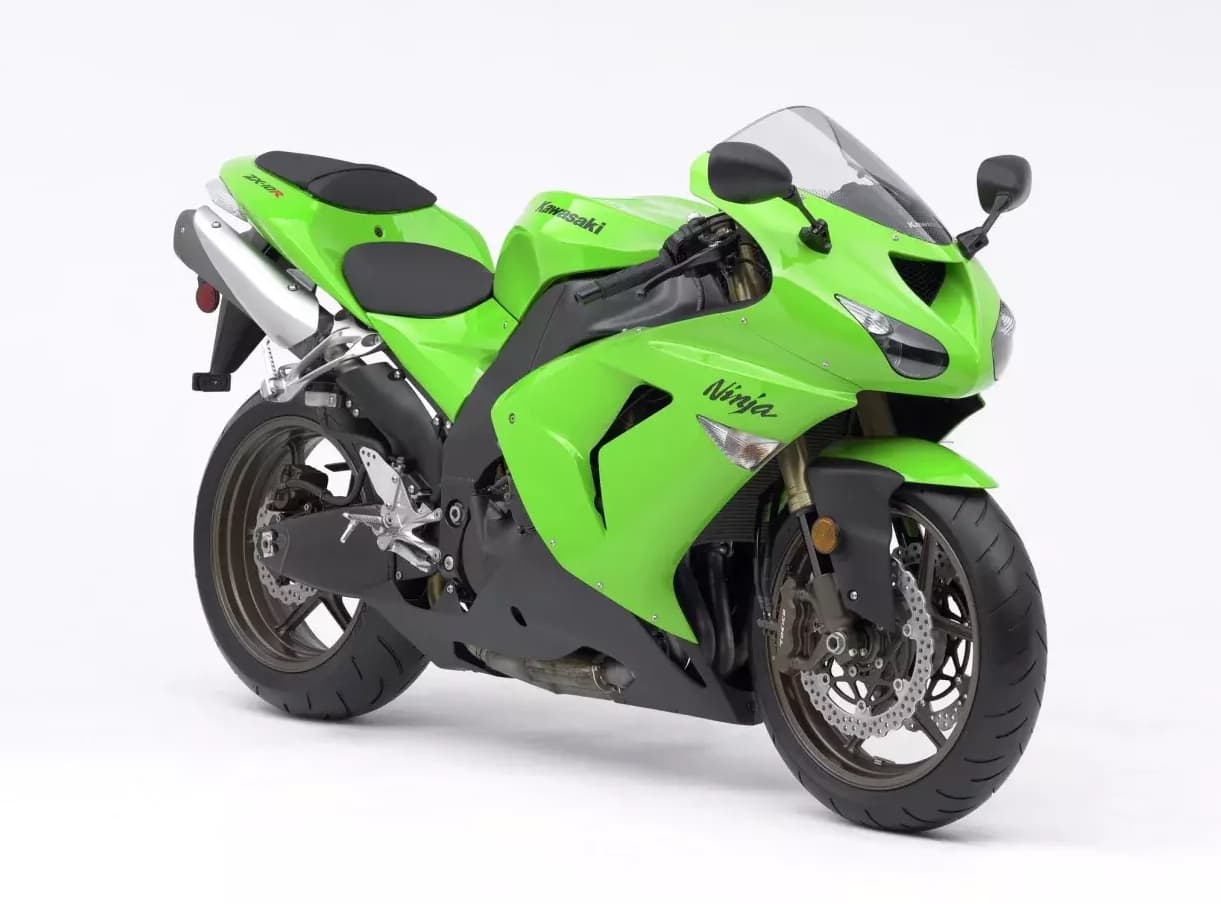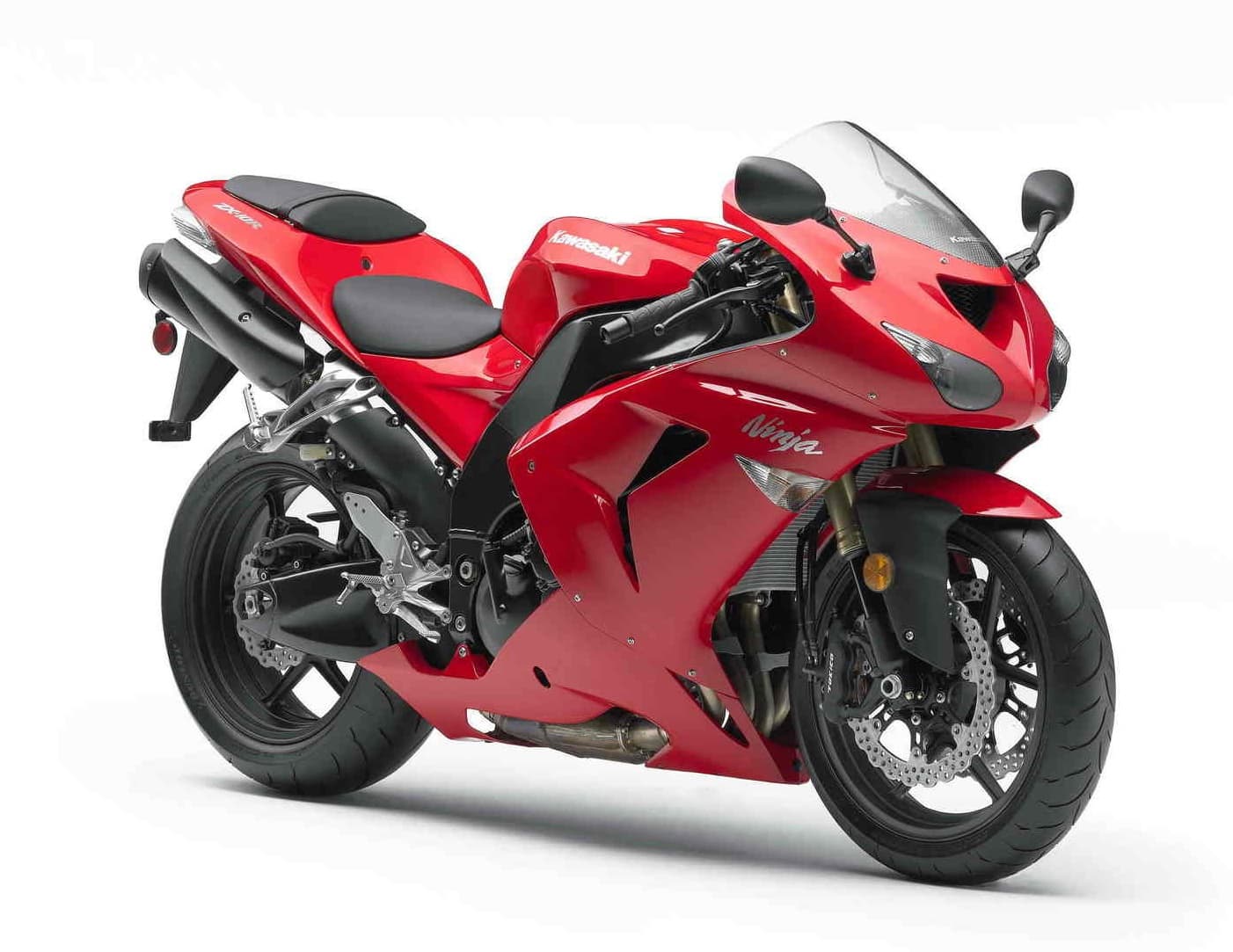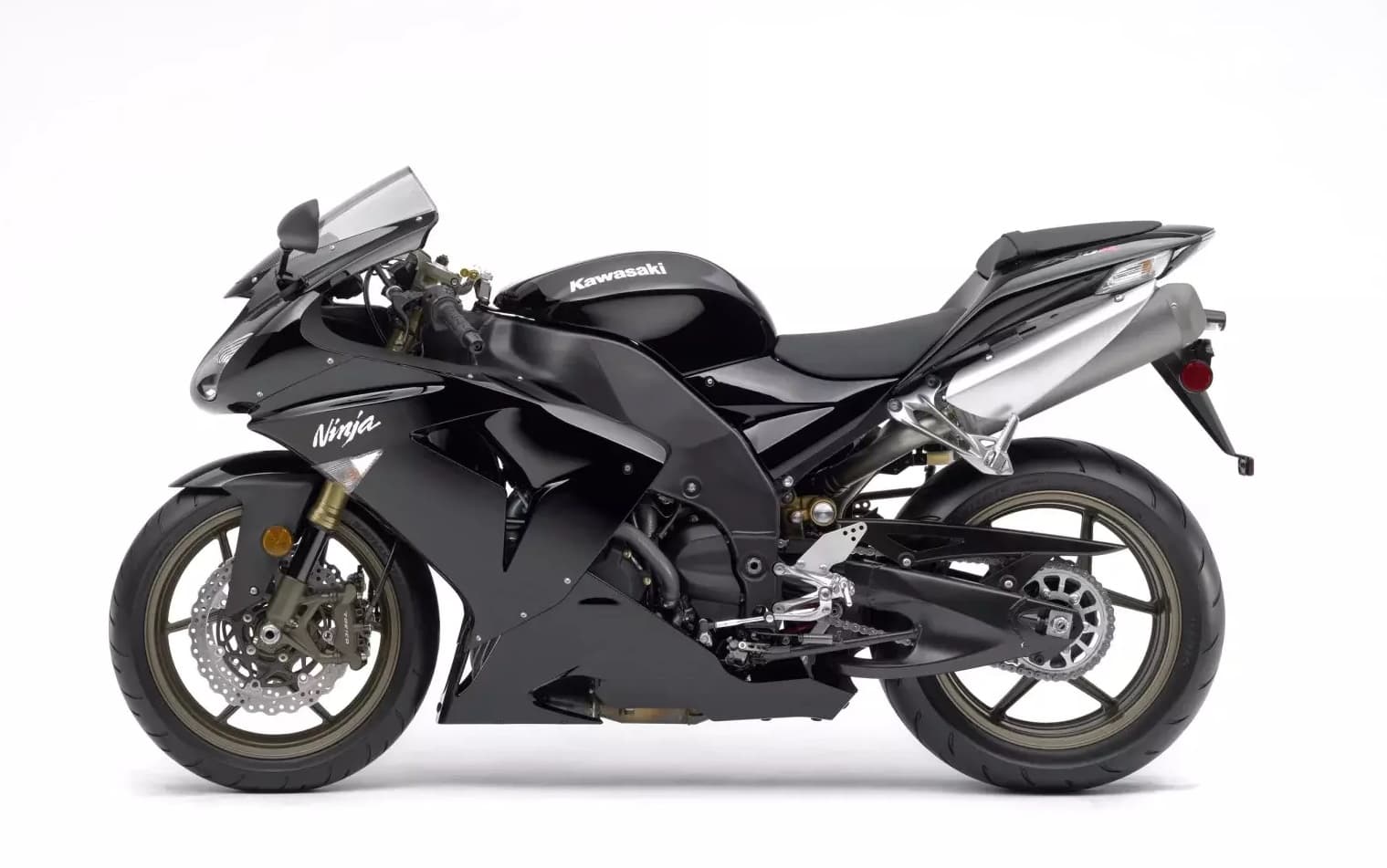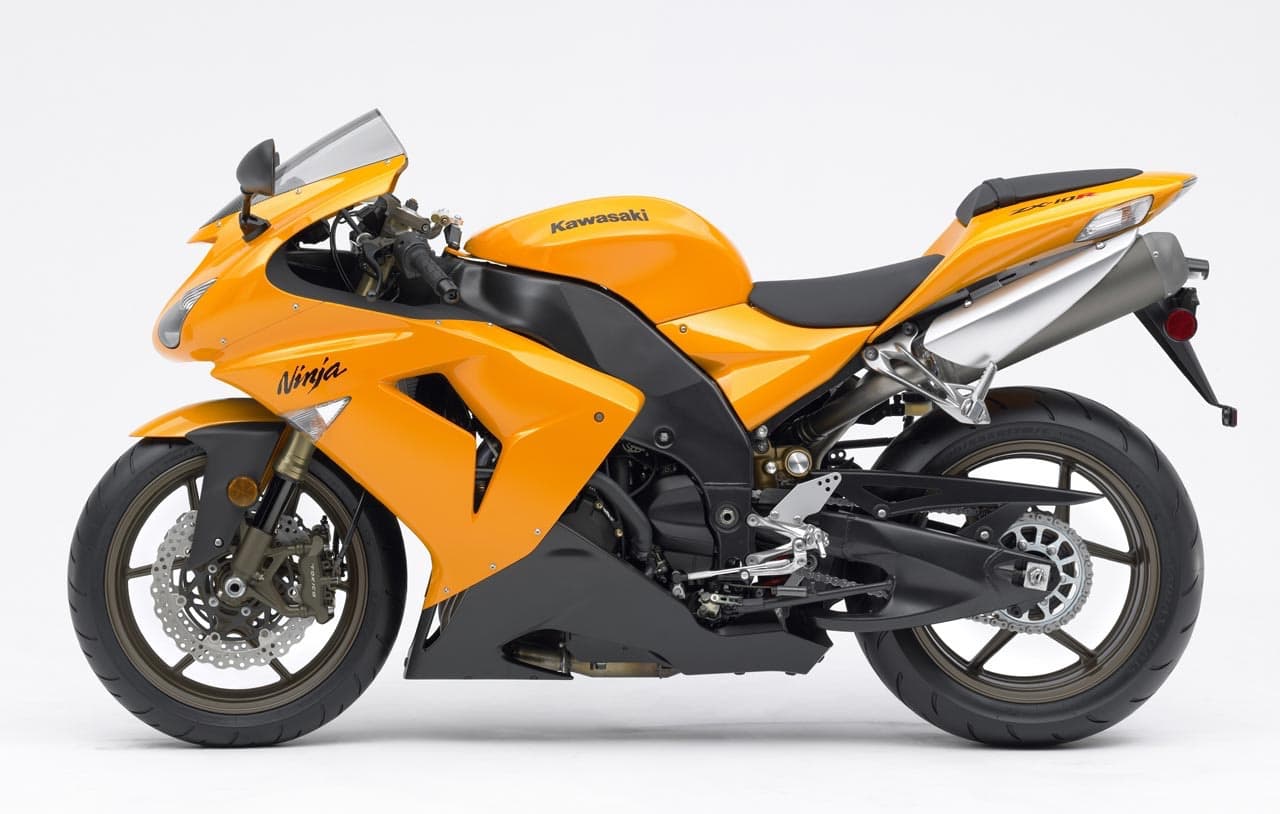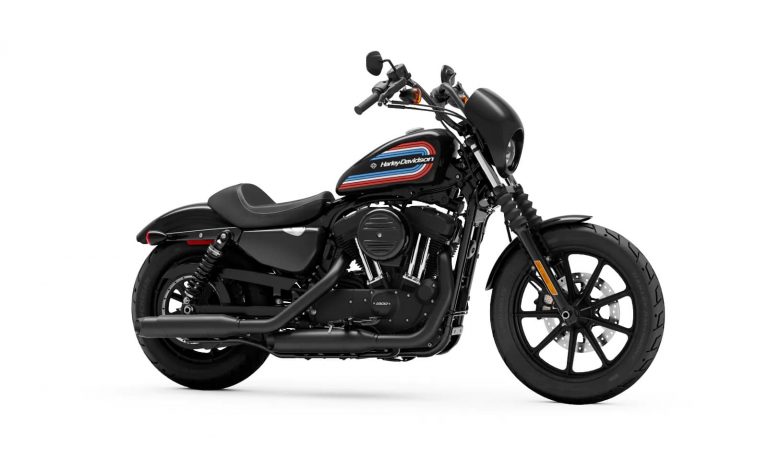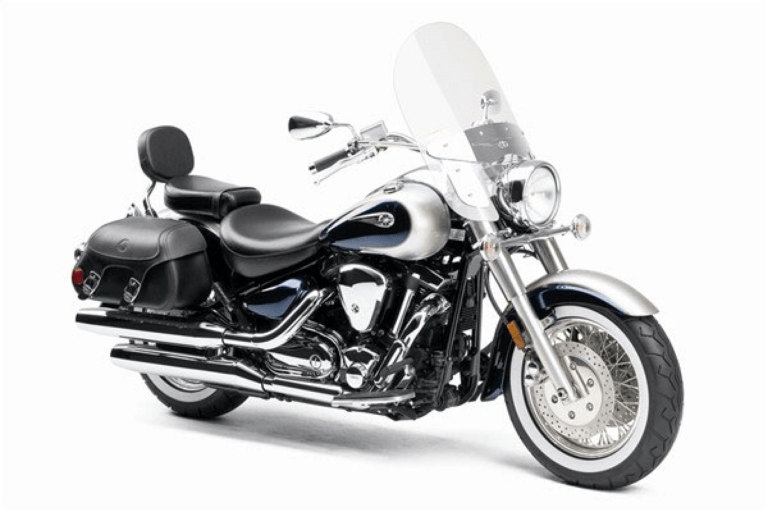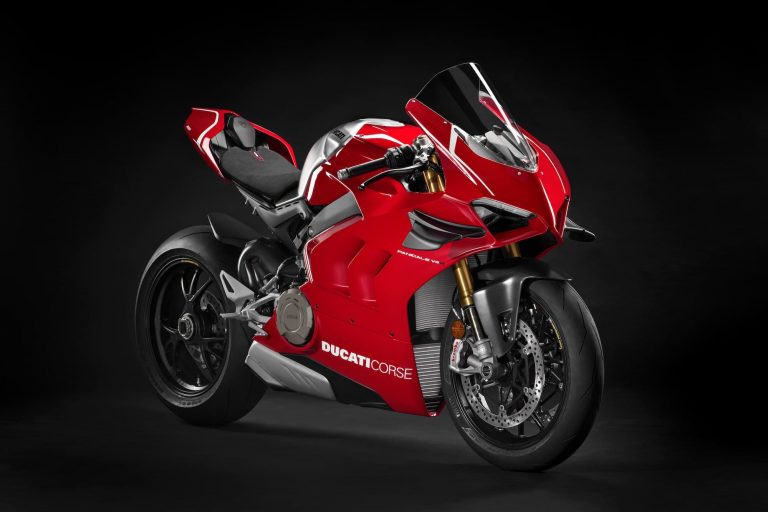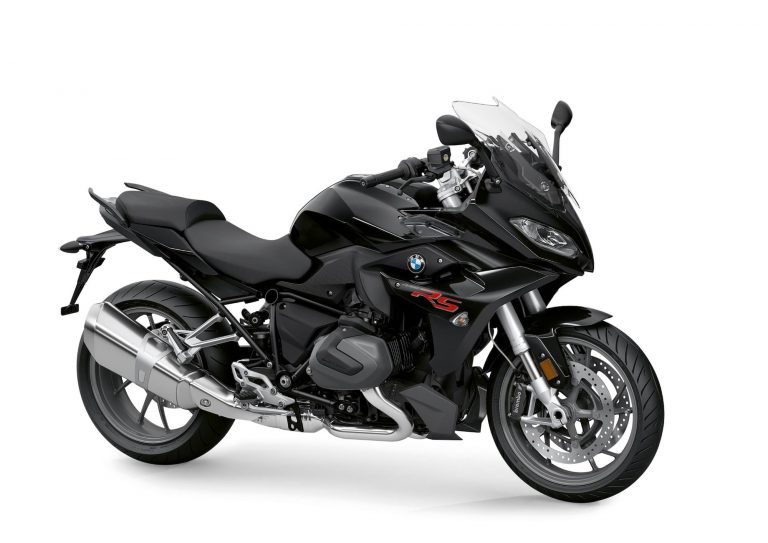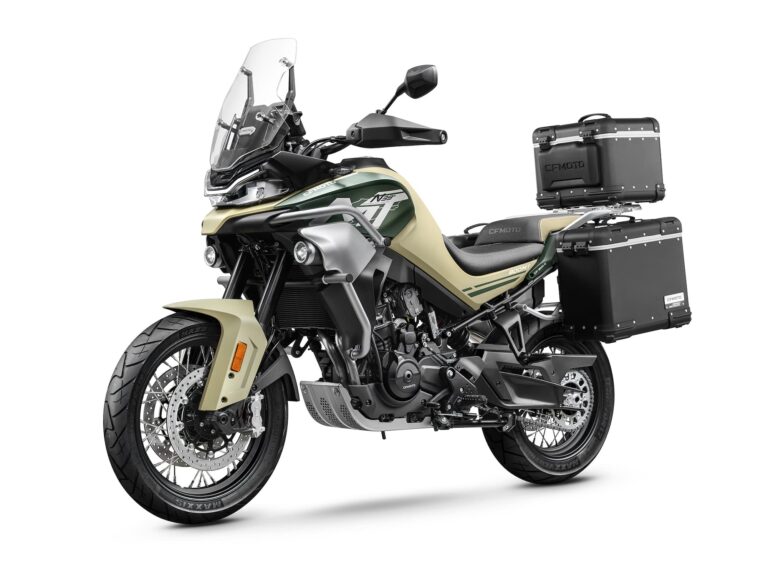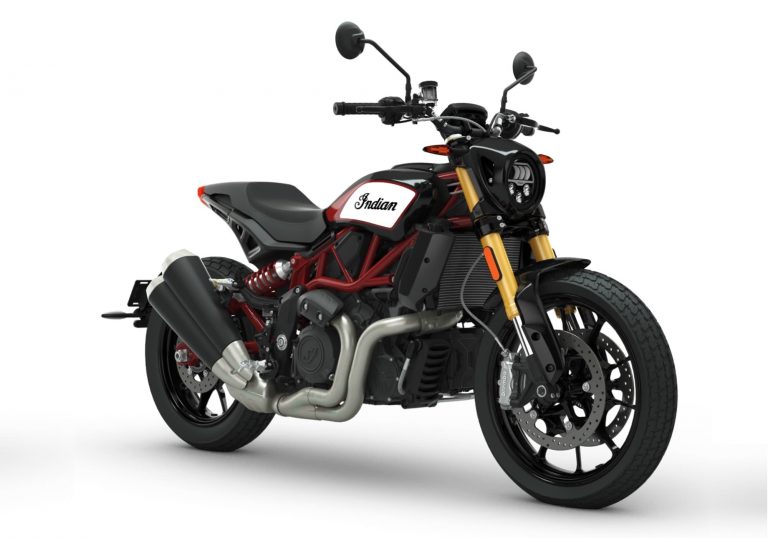Kawasaki Ninja ZX-10R Gen 1 and Gen 2 (2004-2007) Maintenance Schedule and Service Intervals
This is the maintenance schedule with associated service intervals for the first two generations of Kawasaki Ninja ZX-10R (a.k.a. just “ZX10R”), sold between 2004 and 2007. They’re commonly referred to as the gen 1 Ninja ZX-10R and gen 2 Ninja ZX-10R, or just without the hyphen as the Kawasaki ZX10R. While they were different in specs, they have the same components and maintenance schedule.
The first generation of ZX-10R was a successor to the much more popular Ninja ZX-9R. They both have a 998cc inline four-cylinder engine that made 130 kW (175 hp) at 11,700 rpm, or even more with ram air.
- The 2004-2005 (Gen) 1 Ninja ZX-10R had digital gauges, weighed 170kg dry, and had exhausts out the sides. It didn’t do too well in racing nor in floor sales. The engine is great, but a bit too much for the chassis compared to other superbikes of the day.
- The 2006-2007 (Gen 2) Ninja ZX-10R got analogue gauges and became softer, and even 4 kg (10 lb) heavier. Kawasaki made the styling more “rounded”. They also gave it under-seat exhausts (all the rage at the time), an Öhlins steering damper, tweaked geometry, and a heavier crankshaft, plus different injectors (trying to tame the engine). Still, because it’s softer, this is the “least desirable” ZX-10R per forums. Analogue gauges.
In 2008, Kawasaki significantly revamped the engine for the 3rd gen ZX-10R, giving it 140-150 kW (188-200hp), increasing with ram air. They extended the wheelbase, the rake, and upgraded the braking. This was when Ninja ZX-10Rs became much more competitive. The rest is history — the 2010s saw them win a string of races.
This site has links for things like oil and spark plugs from which we earn a commission (which unfortunately nobody can save, not even us). If you appreciate this work, then please use those links. Thanks!
Kawasaki ZX-10R Service Intervals
The Kawasaki ZX-10R has 7500 mile / 12000 km service intervals between oil and filter changes. At every minor service, also look over the motorcycle for items that are leaking, worn, or in need of lubrication.
Replace the spark plugs at every minor service, too.
The major valve service should be done every 15000 miles or 24000 km.
Kawasaki recommends you replace the air filter between services, every 12000 miles / 18000 km, unless you frequently ride your ZX-10R in the dirt, dust, or rain.
Replace the brake fluid every 2 years and the coolant every 3 years.
What you need to service your Gen 1 and Gen 2 Kawasaki Ninja ZX-10R
Apart from basic motorcycle maintenance tools, here’s what you need to service your gen 1/gen 2 gixxer 10K.
| Part | 2004-2007 Gen 1/Gen 2 Kawasaki Ninja ZX-10R spec |
|---|---|
| Oil | Kawasaki recommends 10W-40 conventional oil, like their own Kawasaki 10W-40. But forum dwellers recommend Shell Rotella T6, Motul 7100, or another high-grade synthetic. |
| Oil filter | There are two oil filters, depending on your year. They fit on the same size nut but have slightly different length. * 2004-2005: Hiflofiltro HF204RC * 2006-2007: Hiflofiltro HF303RC |
| Air filter | Use a K&N air filter part number KA-1004. |
| Spark plug | Standard spark plug is an NGK part number CR9EIA-9. |
| Chain maintenance | Use Motul chain paste to service your chain. |
| Grease | Lithium soap-based grease for external lubrication (like the side stand) |
| Brake pads | Sintered brake pads are best for sport bikes, providing the best braking and longest life. Use EBC brake pads FA369/4HH (two pairs) for the front and FA192HH for the rear. |
Maintenance Schedule for 2004-2007 Kawasaki Ninja ZX-10R
Below is the maintenance schedule for the 2004-2007 Kawasaki Ninja ZX-10R, Gen 1 and Gen 2. It’s the same as in the owner’s manual, but reformatted to fit this screen (this is best viewed on a tablet or a desktop computer).
Notes:
- For higher odometer readings, repeat at the frequency interval established here.
- Follow the earlier of time-based or distance-based service intervals
- Kawasaki recommends items relating to emissions or safety be serviced by an authorised dealer.
- Service the oil, chain, and brakes more often if riding in dusty, wet, muddy, or aggressive riding conditions.
| mi x 1000 | 4 | 7.5 | 12 | 15 | 20 | 24 | |
|---|---|---|---|---|---|---|---|
| km x 1000 | Every | 6 | 12 | 18 | 24 | 30 | 36 |
| Change/Replacement items | |||||||
| Air cleaner element # – replace (KA-1004) | X | X | |||||
| Engine oil # (Kawasaki 10W-40, Motul 7100, Mobil 1 Synthetic) | year | X | X | X | |||
| Oil filter (2004-2005: HF204RC, 2006-2007: HF303RC) | year | X | X | X | |||
| Fuel hoses | 4 years | ||||||
| Coolant (Zerex G05) | 3 years | X | |||||
| Radiator hoses and O-rings | 3 years | X | |||||
| Brake hoses | 4 years | ||||||
| Brake fluid (front and rear) (Castrol DOT 4) | 2 years | X | |||||
| Rubber parts of master cylinder and caliper | 4 years | ||||||
| Spark plugs (NGK CR9EIA-9) | X | X | X | ||||
| Engine related items | |||||||
| Check valve clearances | X | ||||||
| Throttle control system (play, smooth return, no drag) | year | X | X | X | |||
| Engine vacuum synchronization | X | X | X | ||||
| Idle speed | X | X | X | ||||
| Fuel leak (fuel hose and pipe) | year | X | X | X | |||
| Fuel hoses condition/damage | year | X | X | X | |||
| Coolant level | X | X | X | ||||
| Coolant leak | year | X | X | X | |||
| Radiator hose damage | year | X | X | X | |||
| Radiator hoses condition | year | X | X | X | |||
| Evaporative emission system (CA only) — inspect | X | X | X | X | X | X | |
| Air suction system | X | X | X | ||||
| Drivetrain | |||||||
| Clutch operation (play, engagement, disengagement) | X | X | X | ||||
| Drive chain lubrication # (Motul chain paste) | 600 km (400 mile) | ||||||
| Drive chain slack # | 1000 km (600 mile) | ||||||
| Drive chain wear # | X | X | X | ||||
| Drive chain guide wear | X | X | X | ||||
| Wheels and tires: | |||||||
| Tire air pressure | year | X | X | X | |||
| Wheels/tires damage | X | X | X | ||||
| Tire tread wear, abnormal wear | X | X | X | ||||
| Wheel bearings damage | year | X | X | X | |||
| Brake system: | |||||||
| Brake fluid leak | year | X | X | X | X | X | X |
| Brake hoses damage | year | X | X | X | X | X | X |
| Brake pad wear # (see above for brake pad recommendations) | X | X | X | X | X | X | |
| Brake hose installation condition | year | X | X | X | X | X | X |
| Brake fluid level | 6 months | X | X | X | X | X | X |
| Brake operation (effectiveness, play, drag) | year | X | X | X | X | X | X |
| Brake light switch operation | X | X | X | X | X | X | |
| Suspension & Steering | |||||||
| Front forks/rear shock absorber operation (damping, smooth stroke) | X | X | X | ||||
| Front forks/rear shock absorber oil leak | year | X | X | X | |||
| Uni-trak rocker arm operation | X | X | X | ||||
| Uni-trak tie rods operation | X | X | X | ||||
| Steering play | year | X | X | X | |||
| Steering stem bearings – lubricate (Lithium soap-based grease) | 2 years | X | |||||
| Electrical System: | |||||||
| Lights and switches operation | year | X | X | X | |||
| Headlight aiming | year | X | X | X | |||
| Side stand switch operation | year | X | X | X | |||
| Engine stop switch operation | year | X | X | X | |||
| Chassis: | |||||||
| Chassis parts – lubricate (lithium soap-based grease) | year | X | X | X | |||
| Bolts and nuts tightness | X | X | X |
Tyre size and tyre pressure for the Gen 1 and Gen 2 Kawasaki Ninja ZX-10R
The Kawasaki Ninja ZX-10R has the following tyres and tyre sizes standard, as well as these recommended tyre pressures.
| Wheel | Size | Brand | |
|---|---|---|---|
| Front | 120/70 ZR17 M/C (58W) | DUNLOP “SPORT MAX D209J” | 250 kPa/36psi |
| Rear | 190/55 ZR17 M/C (75W) | DUNLOP “SPORT MAX D209FMTJ” | 290 kPa/42psi |
These days there are other tyres that owners prefer to use — modern sport or sport touring tyres are more capable than those Dunlops (if you can even find them).
About the Kawasaki Ninja ZX-10R (2004-2007)
The first generation ZX-10R replaced the Kawasaki ZX-9R. It’s the same fundamental kind of bike — a superbike with all-out power and an aggressive riding position — but even more than the 9 ever was.
The first-generation ZX-10R was shocking for motorcyclists for being very quick, with a claimed 128 kW / 175 bhp (or even more with the ram-assisted intake) at 11700 rpm bhp stock and a light dry weight of 170 kg (375 lb) only. The early ZX-10R came with a lot of high tech stuff, including radial-mounted calipers on petal discs, fully adjustable suspension, and even an LCD dash.
Kawasaki has always been ahead of the curve with technology (the latest gen ZX-10R is a rare Japanese superbike with cruise control) and the early 10 was no exception. This generation ZX-10R already had a back torque-limiting clutch, a.k.a. a “slipper” clutch.
To keep the motorcycle small, Kawasaki used a one-piece cylinder/crank case, a rear-mounted generator, and a “stacked” transmission (seen earlier on the Yamaha YZF-R1).
Its engine was great, but some riders complained chassis couldn’t quite keep up — so it didn’t do too well either on the showroom floor or on the racetrack.
Even riding the ZX-10R today, it’s hard to imagine how a superbike could get any better. It has torque all through the power curve and a relatively high redline of 13000 rpm.
Manual for the Kawasaki Ninja ZX-10R
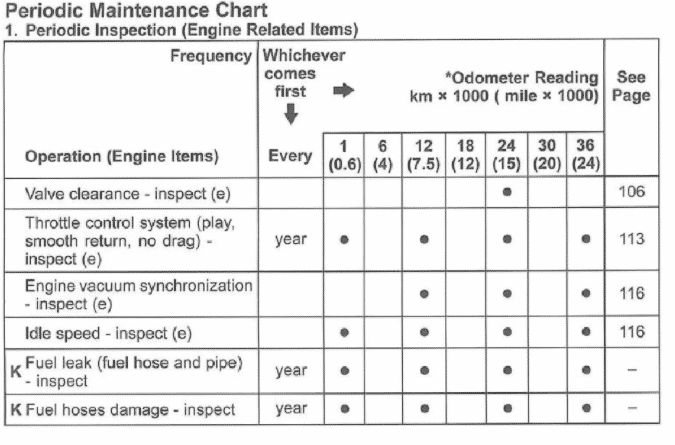
The above maintenance schedule comes directly from the user’s manual for the 2006-2007 Kawasaki Ninja ZX-10R, which is available here. It’s the same basic content as for the earlier one, pictured below, though re-arranged.
